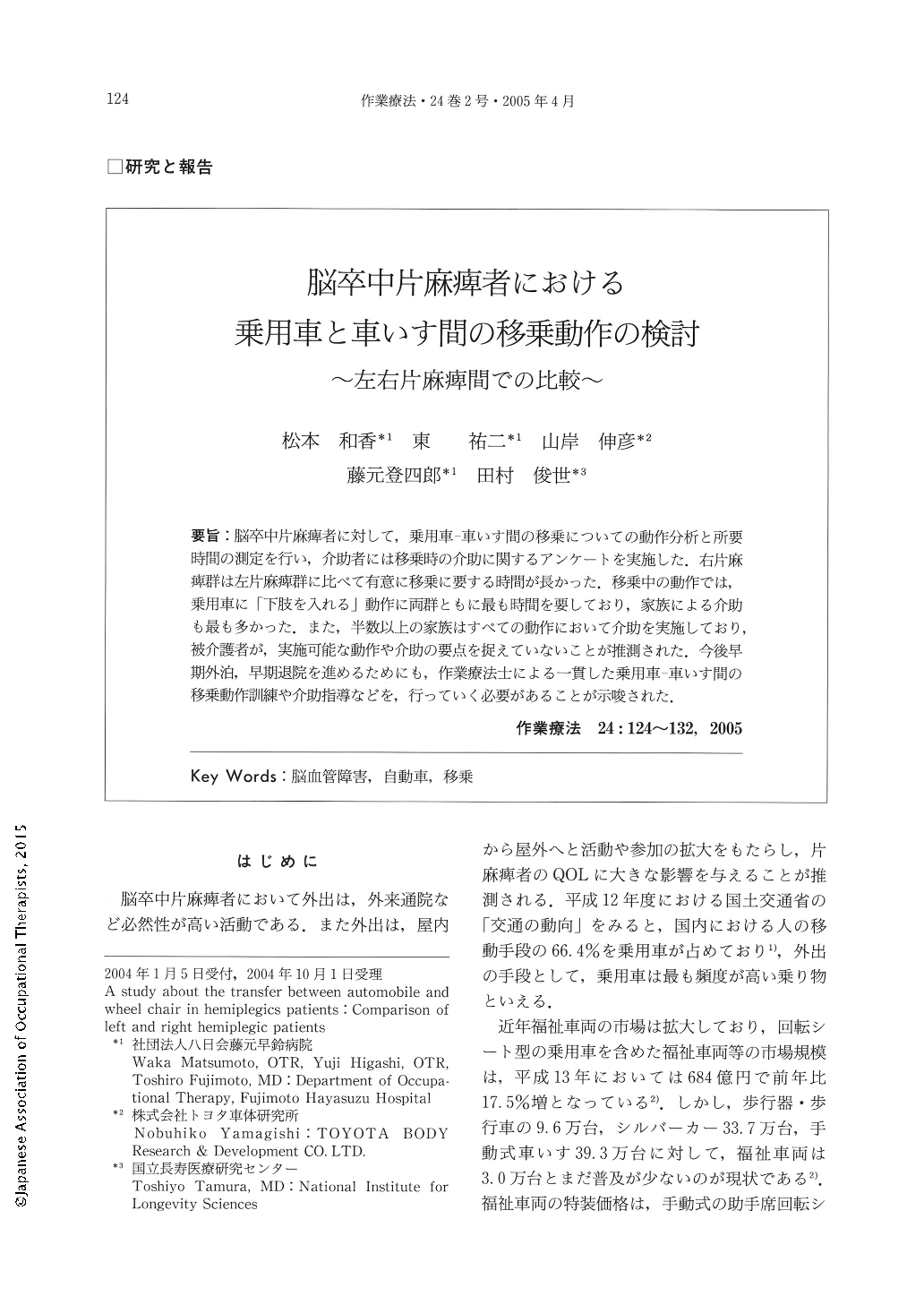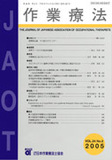Japanese
English
- 販売していません
- Abstract 文献概要
- 1ページ目 Look Inside
- 参考文献 Reference
要旨:脳卒中片麻痺者に対して,乗用車—車いす間の移乗についての動作分析と所要時間の測定を行い,介助者には移乗時の介助に関するアンケートを実施した.右片麻痺群は左片麻痺群に比べて有意に移乗に要する時間が長かった.移乗中の動作では,乗用車に「下肢を入れる」動作に両群ともに最も時間を要しており,家族による介助も最も多かった.また,半数以上の家族はすべての動作において介助を実施しており,被介護者が,実施可能な動作や介助の要点を捉えていないことが推測された.今後早期外泊,早期退院を進めるためにも,作業療法士による一貫した乗用車—車いす間の移乗動作訓練や介助指導などを,行っていく必要があることが示唆された.
We performed an analysis of operation and the measurement of transfer time between a private car and a wheelchair in the case of hemiplegic patients, and asked caregivers to fill out a questionnaire having to do with the burden of transfer-care. Results showed that transfer time in the right hemiplegic patients is much longer than that in the left one (p<0.05). With regard to individual action, the putting of legs into a passenger car is the most time consuming function for right and left hemiplegic patients. The burden of care is also the highest. These results indicated that right hemiplegic patients took time to transfer in Japanese traffic conditions (left-hand-side drive). Although we are unable to measure, quantitatively, the burden of the physical care via this questionnaire, we were able to ascertain that the majority of the caregivers were nonetheless able to administer care under all operations. These results indicated that the hemiplegic patients could not understand effective transfer operation, and the caregivers could not point out the particular points of care in the transfer to the passenger car. Furthermore, the authorized training and care plan of transfer between the passenger car and wheelchair really requires occupational therapists to permit early stay-out, early out-of-hospital, for hemiplegic patients and their families.

Copyright © 2005, Japanese Association of Occupational Therapists. All rights reserved.


